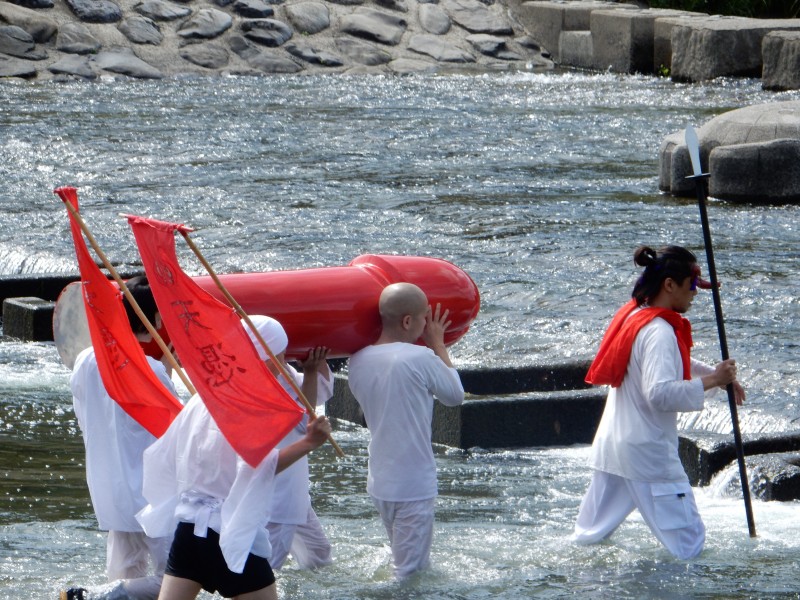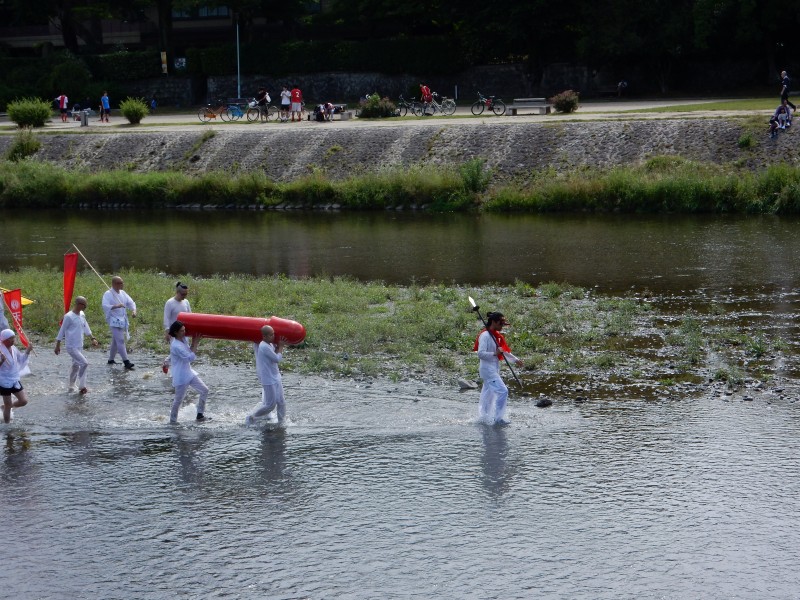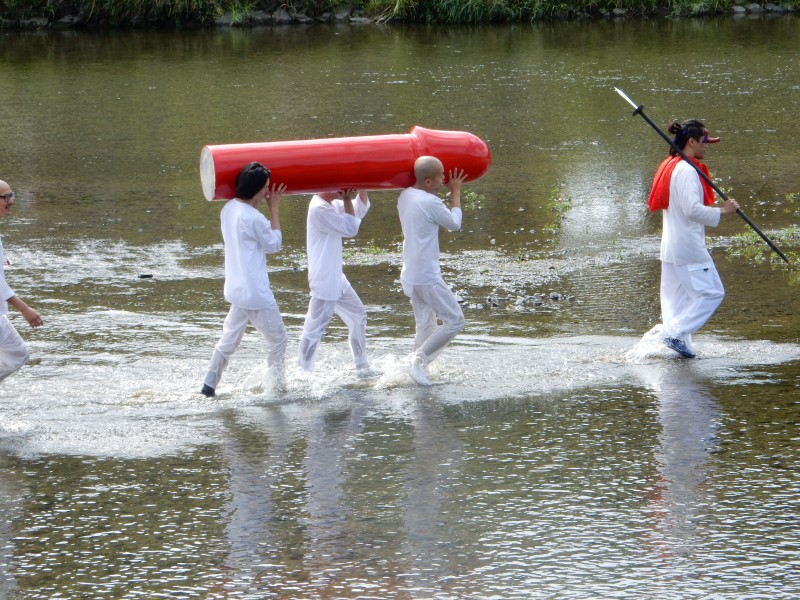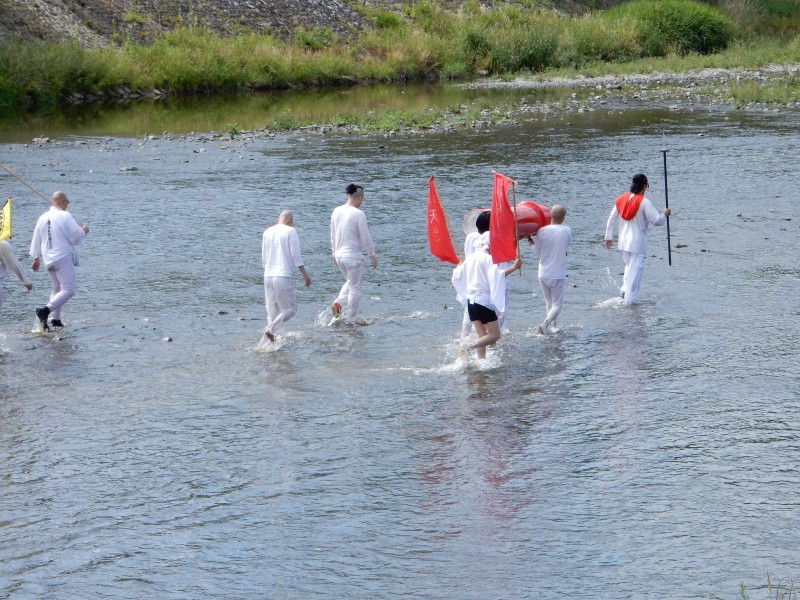
Imagine my surprise when on my usual commute along the river Kamogawa in Kyoto, I happened to see the above scene. How very odd I thought. But then I remembered Green Shinto friend Roger Walch telling me something about his friends in an art collective in Osaka who organise an annual fertility festival in the Kamogawa. I guessed it must be them.
There were a couple of women accompanying the group along the river bank carrying banners, so I stopped to ask them about the event. They told me it was the Tentsuku Hounen Matsuri (Tentsuku being heavenly possession and Hounen meaning fertility and the name of the famous phallic festival held at Nagoya every year). Was it an artistic performance or a religious festival, I asked? It’s folk religion, they answered. A new addition to the tradition of Minzoku Shinto.

This was the first time I’ve come across this in Japan. Green Shinto has carried reports of similar developments in the West, so for Japan this seemed something of a breakthrough. Japan is famously conservative, and in nearly every social movement over the past century it’s lagged something like thirty to fifty years behind the West. Think of smoking, gay rights, drugs, feminism, anti-discrimination…. you name it, and Japan will be the last to implement it.
In this respect I can’t help thinking that the Tentsuku Hounen Matsuri is Japan’s equivalent to the first neo-pagan events in the West, before words like Wicca had become part of the national consciousness. I recall taking part in an early Beltane festival at Glastonbury in the early 1970s that was very much on a par with the small group striding along the river in Kyoto.
I can’t speak for the intentions of the group, but the event was ‘pregnant’ with symbolism. Red is the colour of health and well-being, the phallus the organ of seed-giving. The impact of the red phallus is traditionally not only one of fertility, but of a way of scaring away evil spirits (in Bhutan they have them painted on their houses). This goes along with the white clothes to denote purity, and the troupe was led, I noticed, by a fellow with a big phallic nose indicative of Sarutahito, guide and leader.

The phallus was aiming for this triangular power spot
The route of the group was from Sanjo upriver to Imadegawa and the ‘power spot’ in the junction of the two rivers, Kamogawa and Takanogawa. Here the group enacted a very simple penetration by pushing the red phallus through a white sheet with a hole in it. (I’ve seen this done much more graphically in traditional style in a rice field.) I’m not sure if their intention was to bring fertility to the crops of the area, or to their own creative endeavours in the coming year.
The direction the group took towards the north is traditionally the correct way in which to approach sources of energy and authority. Rivers are well-known energy lines, and the meeting of rivers is a convergence of energy often denoted by ancient markers such as a shrine (in this case Shimogamo Jinja).
The classic shrine in the midst of a wooded copse has been compared to the female womb which is reached through a passageway via a torii opening. Within the womb takes place a magical ritual signifying impregnation, by which the kami descends and life is re-created. This is all the more evident in the case of Shimogamo, since the meeting point of the two rivers forms a V-shape.
It seems then that this New Age Folk Shinto has been very well conceived! Green Shinto truly hopes this is an early indicator of what is to come in the following years as a young generation turns to the past for inspiration, in the same way that neo-paganism has done in Britain and elsewhere.



The Osaka collective pose for a photo by Swiss video maker and Green Shinto friend, Roger Walch

This blog is so lovely! Thank you so much for sharing all these fascinating posts!